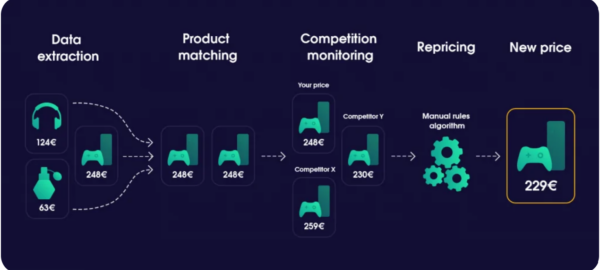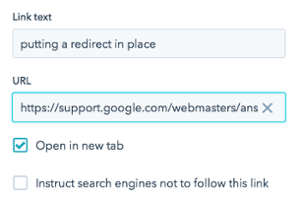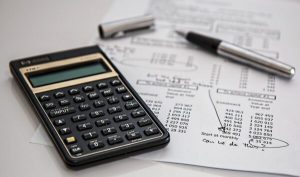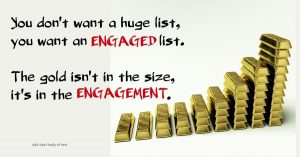
Dynamic pricing – the practice of changing prices according to real-time supply and demand factors – is not new. Airlines have been shifting their prices for years, along with hotels and event-based businesses where supply and demand factors change rapidly.
The internet brought dynamic pricing to the mainstream, allowing many types of businesses to leverage this profit-maximizing strategy. Retail and ecommerce businesses everywhere are beginning to invest more into external data acquisition to power their dynamic pricing strategies.
But does it benefit consumers as well? To answer that question, this article will explore several use cases for dynamic pricing, how it works, and the consequences it has for consumers.
Dynamic Pricing, Defined
Dynamic pricing is a strategy that is used by ecommerce and retail companies. It measures demand and supply factors to set prices for goods and services based on real-time data. A helpful real-world example is a busy outdoor fruit market with the right amount of vendors to promote healthy competition. Too many vendors, and the prices are far too low. Too few, and there may be high prices along with price-fixing.
Optimized over time, most markets reach a healthy equilibrium of vendors and consumers, where supply and demand factors continuously adjust to create maximum satisfaction on both sides. An example of disequilibrium at the fruit market may be the start of a special season – like strawberries – where excited customers demand more than vendors can supply. In that case, prices may shift upwards throughout the day. A contrasting example is at the end of the day when vendors slash all prices to reduce stock (and the effort it takes to load their trucks for the ride home).
Factors Used in Dynamic Pricing
Fast-forwarding to the digital age, dynamic pricing takes place at the speed data flows on the internet through the use of applications that help vendors analyze thousands of supply and demand factors in real time such as:
- Competitor prices – aggregated competitor prices collected from online stores or within a marketplace
- Costs – granular fixed, variable, and amortized cost data, calculated through internal data from warehouse, shipping, and other information sources.
- Predicted demand – calculated through the use of machine learning algorithms by sites like Amazon
- Actual demand – calculated by companies like Lyft and Uber to implement “surge” pricing during high demand periods
- Weather changes – events like storms that can affect the prices of season-specific goods, flights or hotels
- Special events – such as festivals or concerts that create demand spikes for transportation and accommodation
Case Study: Uber/Lyft “Surge” Pricing
Uber and Lyft are ride-sharing applications that users can download to their smartphones to request taxi services. When users want to go somewhere, they request a ride by entering their destination and current location. The application then responds with a pre-calculated fare and estimated time of arrival, along with an option to split the cost with additional riders.
These apps use “surge” pricing that uses a multiplier to adjust prices to match driver supply and rider demand at any given time. In some cases, this can be extreme – as much as 5X during certain conditions – like after bars close on a Saturday night.
Users are alerted when surge pricing is in effect, and are given the option to wait until prices go down. According to some unofficial sources, surge pricing could have been artificially manipulated. In the spirit of the free market, however, some riders responded by taking their business back to traditional taxi cabs.
Types of Dynamic Pricing
There are two main types of dynamic pricing: supply limited and price matching.
A supply-limited dynamic pricing strategy changes prices based on customer behavior. This is most common in airline, hotel and other industries where supply is either limited or has a limited shelf life. In contrast, a dynamic pricing strategy changes prices based on the activity of the competition. This is most common in the retail industry. Below is an infographic that shows you the price matching strategy in action:
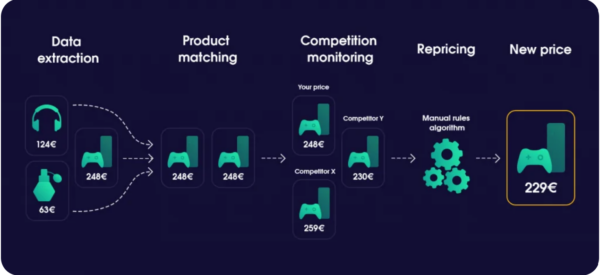
Source: Oxylabs
How Dynamic Pricing Works
There are several mechanisms behind dynamic pricing. One of the primary methods uses web scraping – a data extraction technique that uses scripts (also called bots) to crawl, extract and parse (make readable) data that contains factors used in dynamic pricing.
To extract data, the bots make “requests” for information. Most websites have request limits, and when they are exceeded the servers may ban specific IP addresses to prevent overload. Residential proxies address the problem by leveraging a network of different IPs that distribute requests and provide anonymity.
Another issue that complicates web scraping is the changing structure of websites. To address the problem, web scraping scripts must continuously be adjusted and monitored. AI and ML-powered solutions help address this issue.
Does Dynamic Pricing Benefit Consumers?
Dynamic pricing can maximize social welfare and firm revenue under conditions where demand and capacity are proportionate. When demand is inelastic – such as the case for water or other items needed to survive – dynamic pricing would likely work in the producer’s favour. In contrast, if consumers are able to wait for prices to go down, the firm must incorporate this behavior into its production, pricing or marketing strategy to maximize revenue.
Consumer pricing disadvantages are clearly seen in some instances, such as Uber/Lyft surge pricing where some consumers in certain conditions – such as heavy rain or nightly hours – pay prices that are exorbitantly higher than normal. Demand is inelastic in those cases when compared to purchasing a flight for a trip several months in advance. In that case, the consumer can change dates, flight times, or even the trip location to maximize the value of their purchase.
In addition to demand factors, the health of the overall economic environment underlying the industry plays a significant role in the effect of dynamic pricing. If there is little competition due to monopolistic forces, then raising prices pressures consumers to pay more than they would in an otherwise free market.
However, it’s not all doom and gloom. According to research from PwC, two thirds (65%) of ecommerce consumer purchases are driven by low prices. Dynamic pricing, by its nature, is a race to offer the most attractive price to the consumer. As the most attractive one is often also the lowest price, dynamic pricing greatly raises the competition between companies.
Such increases in competition, if there is no monopoly or oligopoly present, drive prices down much more quickly than ever before. In fact, it may more accurately represent a healthy, competitive, and free market.
Therefore, in most cases seen so far on the online environment, dynamic pricing appears to have primarily worked in the consumer’s favour. So long as a market is free, dynamic pricing allows for increased competition, resulting in lower prices that ultimately benefit consumers.
Wrapping Up
Companies of all sizes are leveraging dynamic pricing with great success across all industries – and the trend appears to be benefiting consumers. If you want to find out more about web scraping and real-time data acquisition, join OxyCon, which will take place online on 25-26th of August. Free registration is available here!
Digital & Social Articles on Business 2 Community
(68)
